RFM Map
Overview
The RFM Map helps understand customers by organizing them into segments based on order recency and frequency, specifically by leveraging the number of purchasing cycles without a purchase and the number of completed orders. Kevel's RFM Map can be customized to better align with specific businesses. This pages elaborates on how to use and configure the RFM Map.
Each section represents ready-to-activate audiences such as "Just Acquired", "In Need Of Attention", or "Lost Heavy Buyers". These audiences are automatically created as segments and kept up to date and can be pushed to marketing platforms, such as Facebook, Google Ads, or email marketing.
The way these audiences are defined can be configured to meet each business's needs.
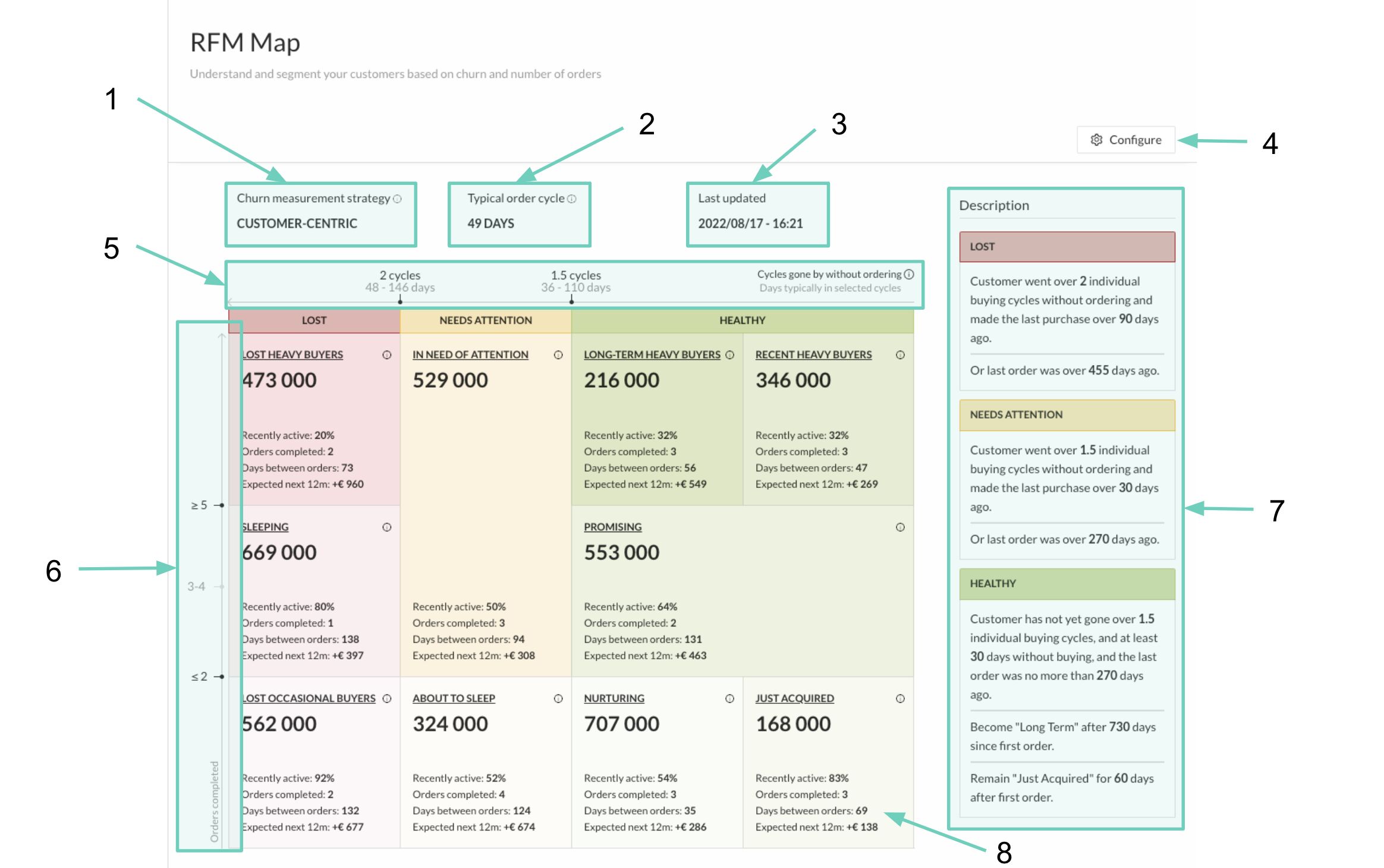
Components
- Churn measurement strategy indicator (more detailed information here).
- Typical number of days between orders as calculated by Kevel Audience.
- The timestamp at which the RFM map has last been changed.
- Configuration menu. It allows changing the churn measurement strategy and the parameters that define the audiences.
- The x axis displays the number of cycles gone by without ordering thresholds and what they represent in days. In the context of the Business-centric strategy, this cycle duration remains constant across all users, predetermined and fixed according to the defined value. Conversely, within the Customer-centric approach, the cycle duration is more dynamic and personalized, varying from user to user based on their typical order cycle.
- The y axis shows the number of completed orders thresholds.
- Information panel showing the parameters in use to define each audience according to its section: LOST, NEEDS ATTENTION, and HEALTHY.
- Each audience is created automatically according to the selected parameters and is ready to activate to any destination.
Segments
For each section on the RFM Map, a segment is automatically created and kept up-to-date with the respective audience. This way, customers in different stages of their lifecycle are ready to be targeted by activations. These are:
- RFM Map - Lost heavy buyers: High-value customers that are considered Lost. Recovering them could have a meaningful impact on the business.
- RFM Map - Sleeping: Mid-value customers that are already considered Lost.
- RFM Map - Lost occasional buyers: Low-value customers that are already Lost.
- RFM Map - In need of attention: Mid to high-value customers who are at risk of becoming Lost. If they buy again, they can become Heavy Buyers.
- RFM Map - About to sleep: Low-value customers at risk of becoming Lost.
- RFM Map - Recent heavy buyers: High-value, with recent orders, customers. These are the business's best customers, with the particularity of having started their buying history recently. They're on the path to becoming Long-term.
- RFM Map - Long-term heavy buyers: High-value, with recent orders, customers. These are the business's best customers, and they started their buying history long ago.
- RFM Map - Promising: Mid-value, with recent orders, customers. They show the potential to become Heavy Buyers.
- RFM Map - Nurturing: Low-value, with recent orders, customers. Their first purchase was made quite some time ago, indicating they are no longer considered "new" customers.
- RFM Map - Just acquired: Low-value, with recent orders, newly acquired customers.
It is possible to jump directly to a segment's definition from the RFM Map by clicking on the segment name.
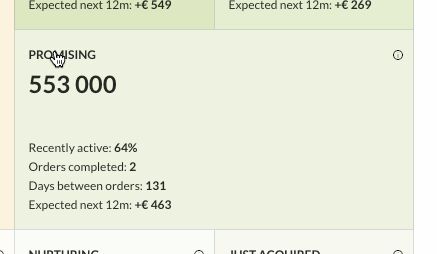
Similarly, it is possible to jump back to the RFM Map configuration page when viewing an RFM Map segment.
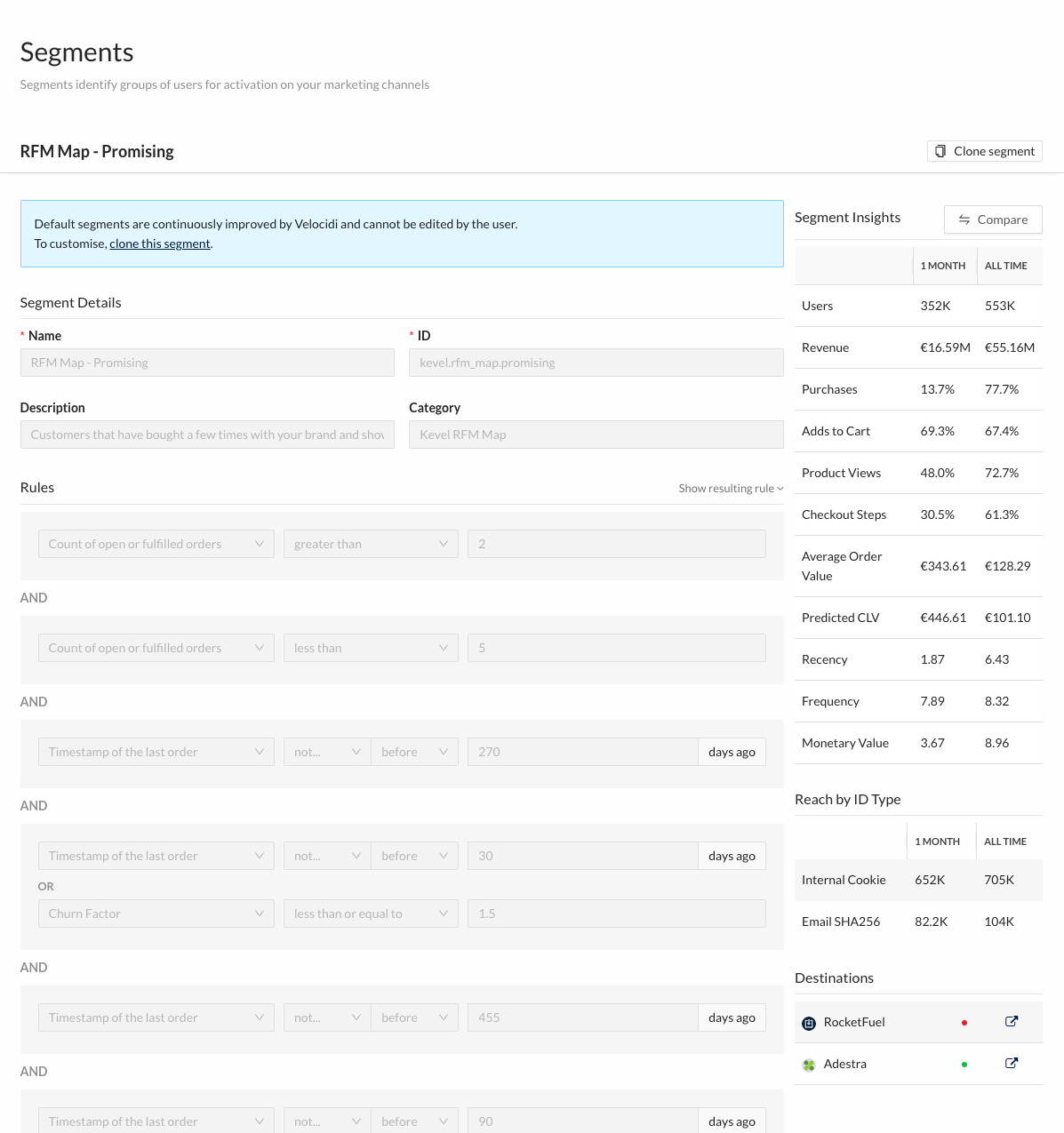
Configuration
The configuration form allows selecting between customer or business-centric approaches and customizing it to better align with the business characteristics.
Customer-Centric vs Business-Centric Strategies
The RFM Map can be configured to use one of the following strategies: Customer or Business-centric.
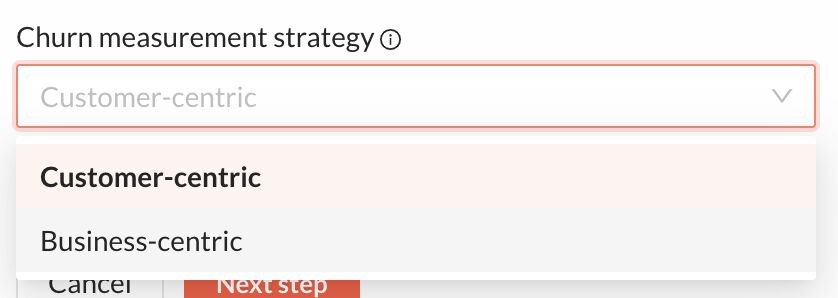
The customer-centric strategy distributes customers across the audiences according to their own unique purchase cycle. It's most indicated for e-commerce businesses with high recurrency potential (e.g., groceries and apparel).
Consider John, who purchases on average every 30 days (a 30-day purchase cycle), and Mary, who has a 55-day purchase cycle. The number of elapsed days without any order to become "churned" will differ for each: 60 days for John and 110 for Mary when using 2 cycles as the threshold for lost customers.
The business-centric strategy stems from insights the brand may have about its business. It's mostly used by subscription-type businesses.
"I know that my customers usually buy, or should be buying, every 30 days, so that's everyone's purchase cycle". Both John and Mary will be considered lost after the same time without new orders (60 days).
Customer-Centric Strategy in Detail
The customer-centric strategy uses the number of order cycles (or churn factor) to assess a customer's readiness to buy again and how recoverable they are.
Consider John (30-day purchase cycle) and Mary (55-day purchase cycle) again. If 60 days have passed without a new order, John will become "Lost", whereas Mary just "Needs Attention".
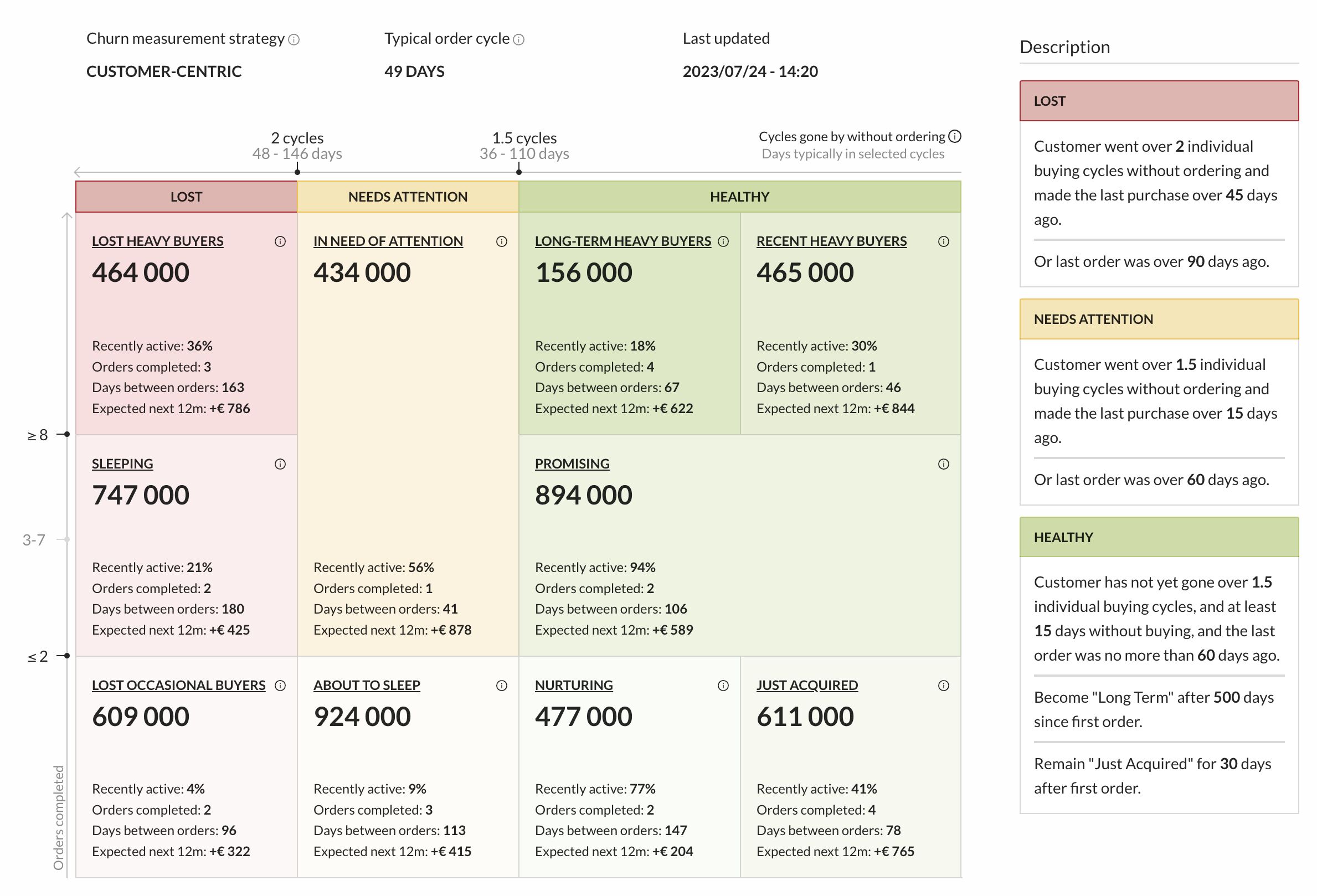
John: his churn factor is 2 AND his last order was over 45 days ago.
Mary: despite her CF being only 1.1, she is not considered "healthy". She will be pushed to "needs attention", because her last order was over 60 days ago.
There are additional settings for this strategy under Safeguards at the last step of the form.
These override rules are meant to adjust the customer's "Needs attention" and "Lost" threshold to safeguard against very short and very long order cycles.
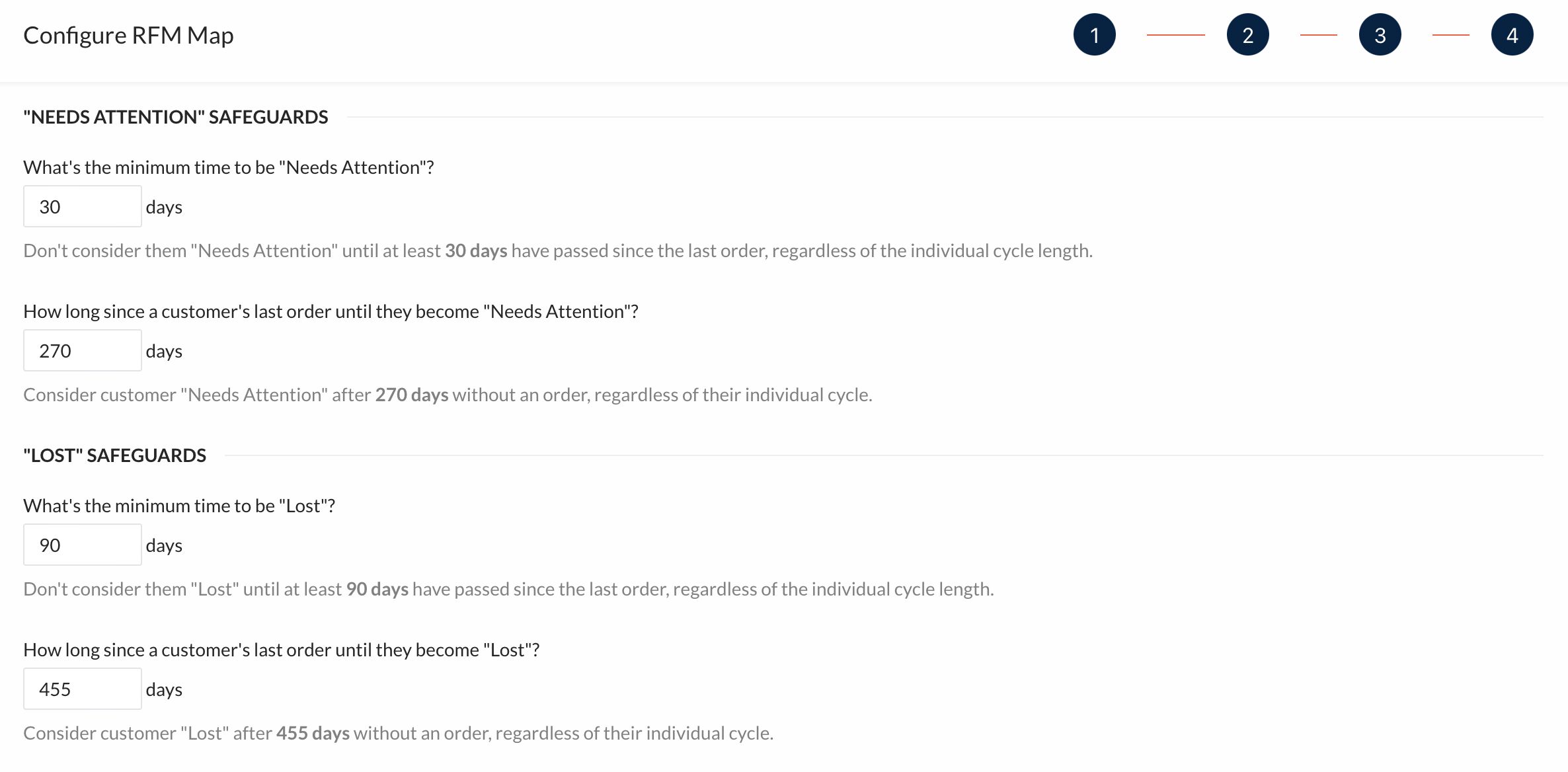
Business-Centric Strategy in Detail
The business-centric strategy does not consider a customer's churn factor. Instead, it simply relies on the inputs regarding time since the last purchase to classify groups of customers as "Need attention" and "Lost".
To keep the definition of the length of time in terms of the number of order cycles, there is an additional field to define the expected order cycle length for the map on the first step of the configuration form.

Customer Tenure, Orders Completed, and Order Cycles
Customer tenure configures the maturity of customers as perceived by the brand.

The following steps will define the number of completed orders and the number of cycles gone by without ordering thresholds.
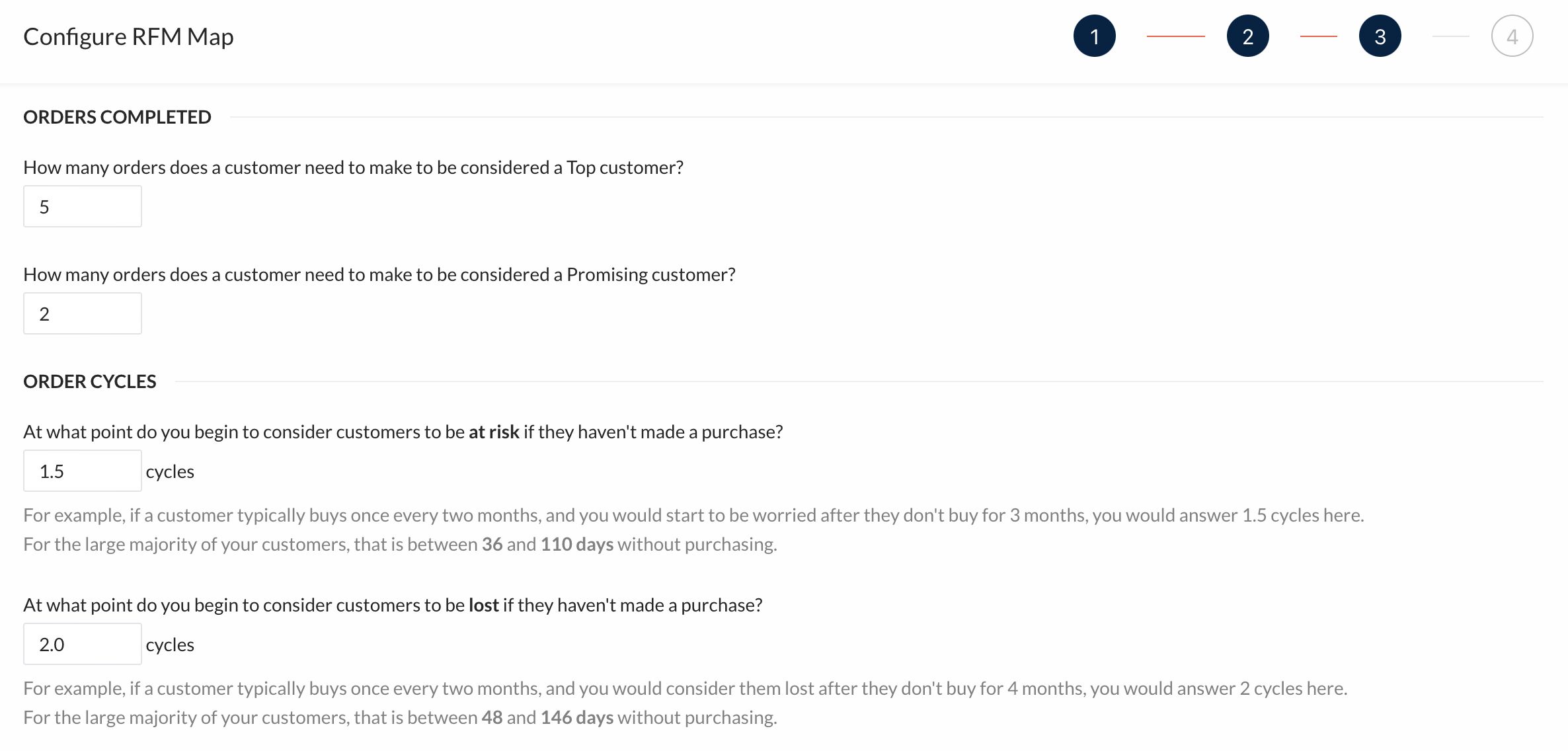
Previewing and Applying the Changes
After updating the configuration, a summary of the reach changes for each segment is displayed, so it can be confirmed that these are aligned with the business expectations.

If the reach is as expected, the changes should be confirmed to update the segments.
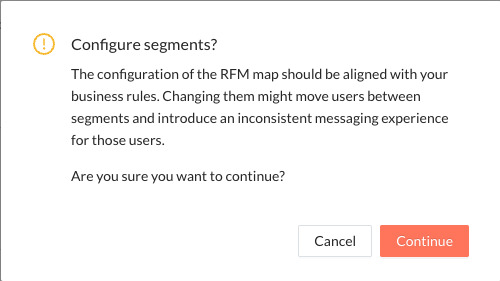
Changing the RFM Map configuration might change segments for a large volume of customers and require them to be reactivated to the configured destinations. Also, changing users between segments might result in an inconsistent messaging experience, so we recommend that these configurations are not frequently updated.